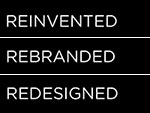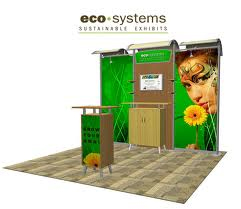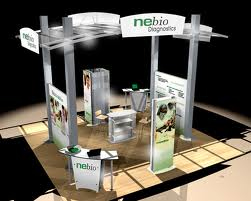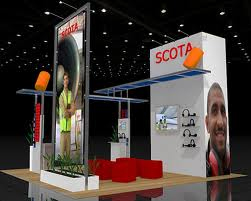 In the last 10 years the trade show rule book has been rewritten as a result of fundamental technological and economic changes. Rules about what it takes to succeed on the show floor.
In the last 10 years the trade show rule book has been rewritten as a result of fundamental technological and economic changes. Rules about what it takes to succeed on the show floor.
Here’s what’s changed – and how you can adapt to those changes:
1. More Uncertainty: Economic uncertainty has lasted for years, and shows little signs of going away. This makes your top company executives reluctant to commit early to trade shows, and buy capital-intensive larger exhibits. You have to balance the need for financial flexibility by waiting longer to commit to shows and vendors, and yet still avoid more expensive rush charges. Rental trade show exhibits help avoid capital expenses, too.
2. Measurement A Must: Gone are the days when you could end the show by saying, “We had a good show, didn’t we?” and that would be enough. Your trade show spending is being compared to more explicitly measurable electronic marketing mediums. So even if your trade show is producing greater results, if you don’t prove it with real numbers, such as ROI ratios or sales generated, it didn’t happen in the minds of your bosses, and your budget is in jeopardy.
3. Trade Shows are Stronger Than Expected: Trade shows are one of the winners in the marketing media wars. Along with electronic media, trade shows have retained a greater share of B2B marketing budgets than print and direct mail. That’s because trade shows still provide what all marketers want: face time with lots of real buyers in one place.
4. More Knowledgeable Buyers: Attendees now look up potential suppliers on the internet before the show, so they arrive already knowing about your products. If they visit you, it’s because they want to know if your product really does what you say it can, who your people are and how trustworthy your company is. You will need to provide more hospitality, have more space for longer meetings, and bring people who can answer detailed questions, but also deepen relationships.
5. Pre-Show Promotions are Harder: Pre-show promotions with traditional media don’t bring in as many attendees as they used to. To get attendees into your booth, you have to do more at-show promotions, to grab their attention when they are focused on the show.
6. Social Media Rising: Social media is where people now spend their time. Fortunately, social media is not a replacement for trade shows, but is a great conduit to people who have tuned out of direct mail, email, ads, and phone calls. Social media can also help you extend the conversation that peaked at the show. Your activities in your booth (new products, product demonstrations, customer testimonials) are great content to share via social media after the show.
7. Which Promotions Work Now: Trade show attendees may walk the show floor, but it’s harder to get them out of the aisle and into your booth space. The internet has given them control of the buying process, so they don’t like to easily give it up at a show, either. So your promotions have to be better. To get them into your booth, you have to give them one of these three things: an exchange of value, an experience, or learning.
8. Vertical Market Messages Love Flat Screens: In the old days, exhibitors would design their exhibit with a main message for the company overall, but swap out a portion of the exhibit graphics to customize their message for different industry trade shows. Now, with the price of large LED flat screen monitors about 25% of what they were when introduced, exhibitors tailor their vertical market messages with pixels, not printed graphics.
9. Even Island Trade Show Exhibits Are Lighter: While portable trade show displays have been the standard for decades, the high cost of shipping and especially drayage have caused big-booth exhibitors to try to lighten their load, too. The improved style and flexibility of metal frame exhibit systems and the brilliant, sharp fabric graphics of today are taking over many trade shows.
10. Unqualified Leads Will Be Ignored: You have to give your sales force more qualifying information about each lead than just contact information, and you should only give them the qualified leads that are ready to talk to a sales person – or at least tell them which leads are the higher quality ones, so they can start there first.
If your trade show marketing isn’t as effective as it used to be, see if you haven’t adapted your program to the new rules of the show hall. Take these new rules into account, and rejuvenate and enhance your program and your results.
For more information on trade show marketing, contact The Exhibit Source.
TSNN.com




 Trade show marketing
Trade show marketing Trade shows aren’t the least expensive way to market your small business, but if done correctly, they are one of the most powerful. Trade shows allow you to reach and speak to people who you might never get the opportunity to do business with otherwise. Planning ahead using a few simple trade show tactics is the key to a successful trade show marketing appearance.
Trade shows aren’t the least expensive way to market your small business, but if done correctly, they are one of the most powerful. Trade shows allow you to reach and speak to people who you might never get the opportunity to do business with otherwise. Planning ahead using a few simple trade show tactics is the key to a successful trade show marketing appearance. In the last 10 years the trade show rule book has been rewritten as a result of fundamental technological and economic changes. Rules about what it takes to succeed on the show floor.
In the last 10 years the trade show rule book has been rewritten as a result of fundamental technological and economic changes. Rules about what it takes to succeed on the show floor. When business is good and sales are going well, it’s easy to get complacent about your marketing plan. But, marketing complacency can be a costly mistake. Markets, competitors, customers and strategies change quickly. If you’re not keeping up then you can easily fall behind which will certainly affect your bottom line.
When business is good and sales are going well, it’s easy to get complacent about your marketing plan. But, marketing complacency can be a costly mistake. Markets, competitors, customers and strategies change quickly. If you’re not keeping up then you can easily fall behind which will certainly affect your bottom line.